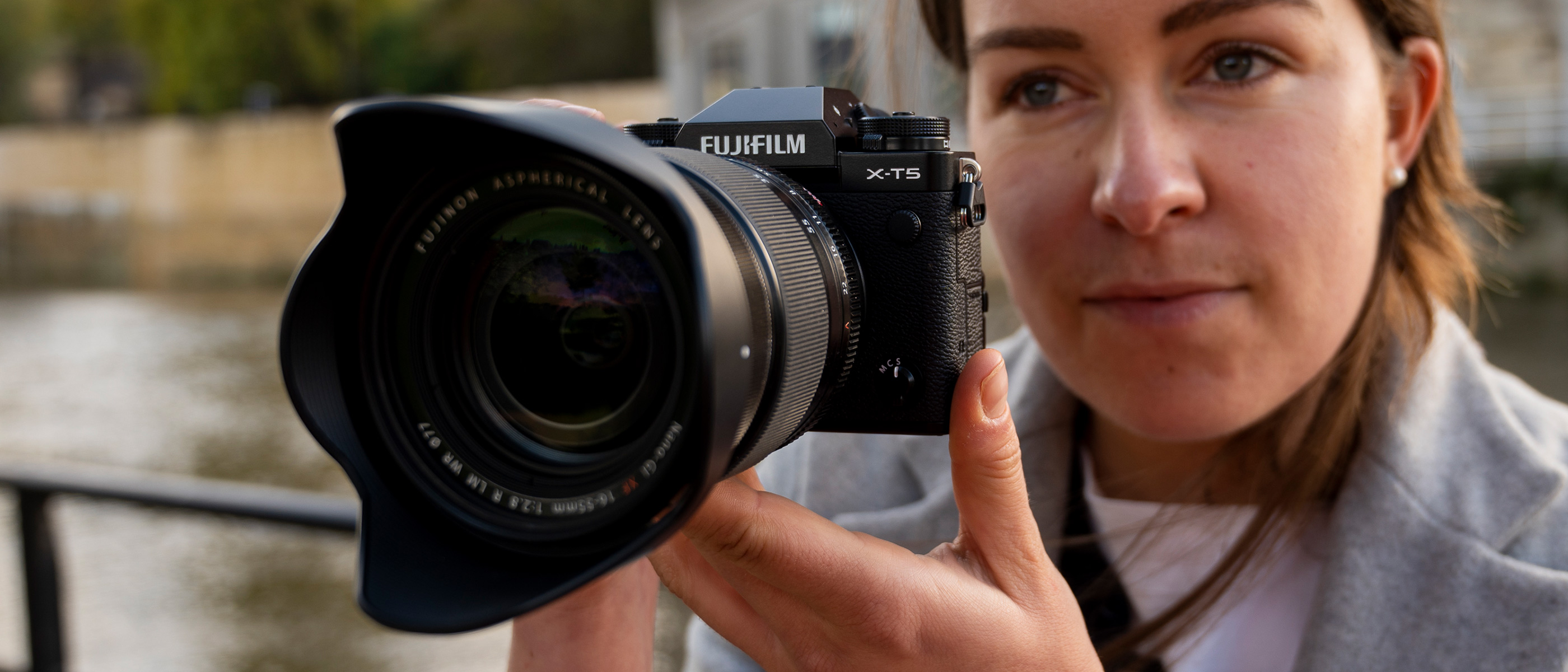Space Verdict
With a 40-megapixel sensor and high-speed processor, the X-T5 packs a lot into a compact body, although the traditional handling and APS-C sensor isn’t ideal for night sky photography.
Pros
- +
Compact, ergonomic design
- +
Wide range of compatible X-mount lenses
- +
High-resolution sensor
Cons
- -
LCD screen tilts but doesn’t flip
- -
Can be top-heavy with larger lenses
- -
Physical control dials aren’t easy to find in the dark
Why you can trust Space.com
The Fujifilm X-T5 is the latest model in Fujifilm's X-series camera, following the launch of the X-H2 and the X-H2S earlier in 2022. As a successor to the Fujifilm X-T4 (which came out in 2020), it shares a similarly compact and traditional design, with iconic dials on the top plate for changing the exposure settings.
Fujifilm's X-series is now ten years old, but the X-T5 brings it up to date with an impressive 40.2MP BSI imaging sensor and the new X-Processor 5, which gives double the processing speed of the X-T4 and a 20% longer battery life.
The ethos of the X-T5 is 'photography first' — hence the manual control dials — but it's no slouch for video either, with 6.2K recording and frame rates up to 29.97FPS. It is a generalist camera designed to perform well across all photographic genres rather than excel at one, and it manages to combine style and substance as it does.
Fujifilm X-T5 review
Fujifilm X-T5: Design
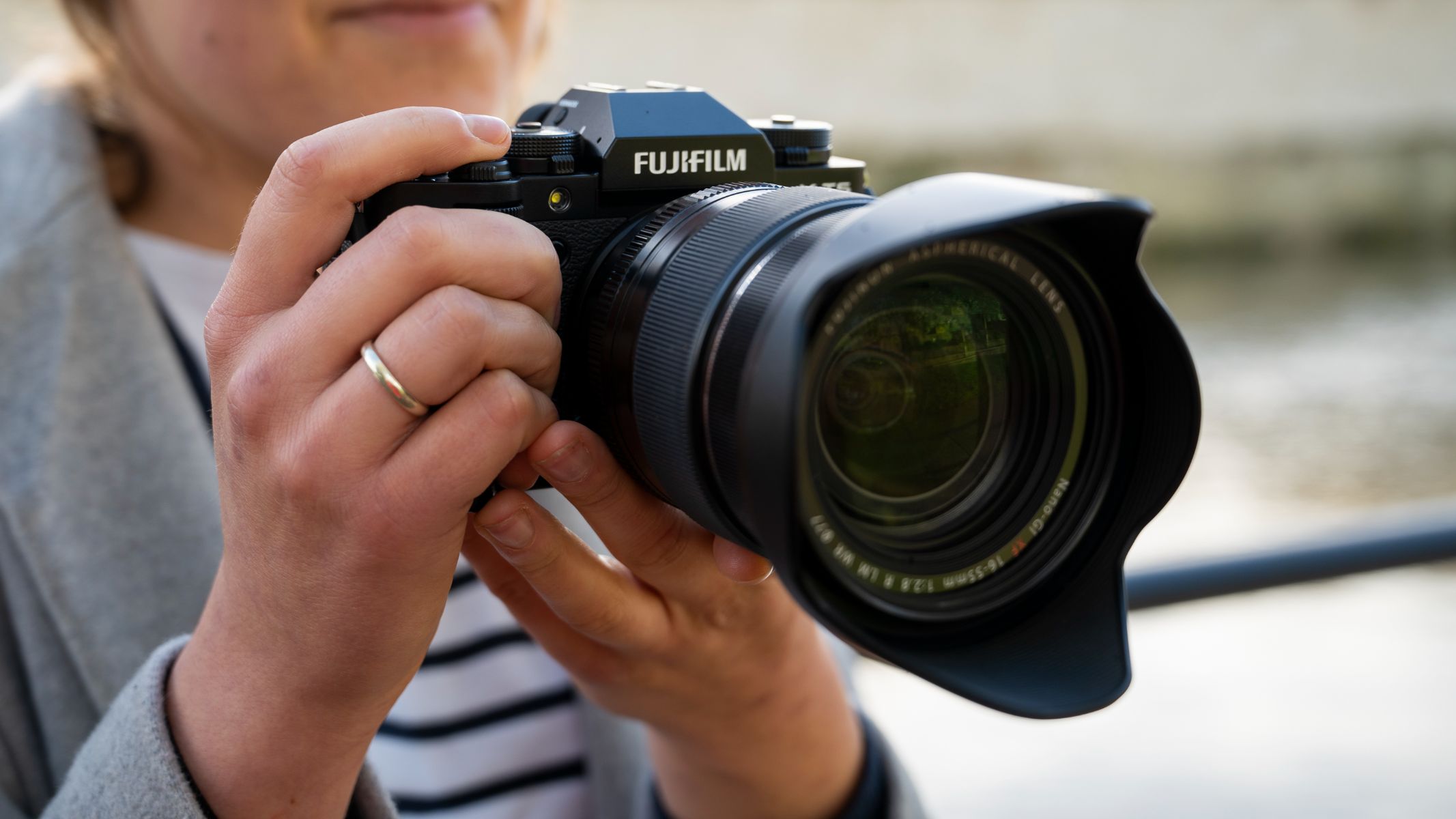
- Control dials for ISO, shutter speed, exposure compensation
- Hard to see controls in the dark
- Weather-sealed against dust and moisture
The Fujifilm X-T5 is an undeniably compact body at just 557g (50g lighter than the X-T4) and this makes it a pleasure to shoot handheld for genres like street photography. Of course, if you're shooting in the dark the camera is likely to be on a tripod, where the weight isn't such an important factor, but it's something to bear in mind if you often hike or travel to your locations and need gear that's lightweight.
In terms of the overall design, you'd definitely call the X-T5 a looker, and it sports a retro vibe in both the black and silver colorways available. The body itself is made from sleek, brushed metal, and the camera has a robust weather-sealed construction — sealed at 56 points, in fact, to resist dust and moisture damage out in the field.
Sensor: 23.5mm x 15.6mm (APS-C) X-Trans CMOS 5 HR
Resolution: 40.2MP
Processor: X-Processor 5
Lens Mount: Fujifilm X
ISO range: 125-12,800 (exp 64-51,200)
Shutter speeds: 1/180000-30secs (electronic)
Storage: 2 x SD/SDHX/SDHC slots
Image stabilizer: Up to 7 stops
Touchscreen: 3-inch touchscreen with 3-way-tilt
Viewfinder: 0.5-inch, 3.69M-dot OLED EVF
Continuous shooting: 15fps (mechanical), 20fps (electronic)
AF: 100% phase detection autofocus pixels
Video: 10-bit 4:2:2 video at 6.2K/30P, 4K/60p webcam mode
Weight: 557g (1.23lb) with battery
Dimensions: 130 x 91 x 64 mm (5.1 x 3.6 x 2.5 in)
The button layout of the Fujifilm X-T5 is defined (much like the X-T4) by three iconic control dials on the top plate of the camera, which allow you to set the ISO, shutter speed and exposure compensation by physically turning them. The ISO dial on the far left is stacked, meaning that underneath it there's another dial for setting the drive mode — continuous (high and low), single shooting, HDR, Pixel Shift Multi-Shot and bracketing. The shutter speed dial is stacked with a Still and Movie switch underneath it, to go from video to photo mode. You can lock both the ISO and shutter dial on the top, which stops you from rotating it accidentally while shooting or when the camera is tucked away in your kit bag.
What about the aperture? Almost every Fujifilm XF lens has an aperture ring on the lens barrel, and this means that all the exposure settings can essentially be changed before you even power up the camera. It's a tactile approach to handling that really suits traditional photographers as it feels much like a rangefinder film camera, but for those coming from other brands or a DSLR style of handling, it will take a while to learn intuitively.
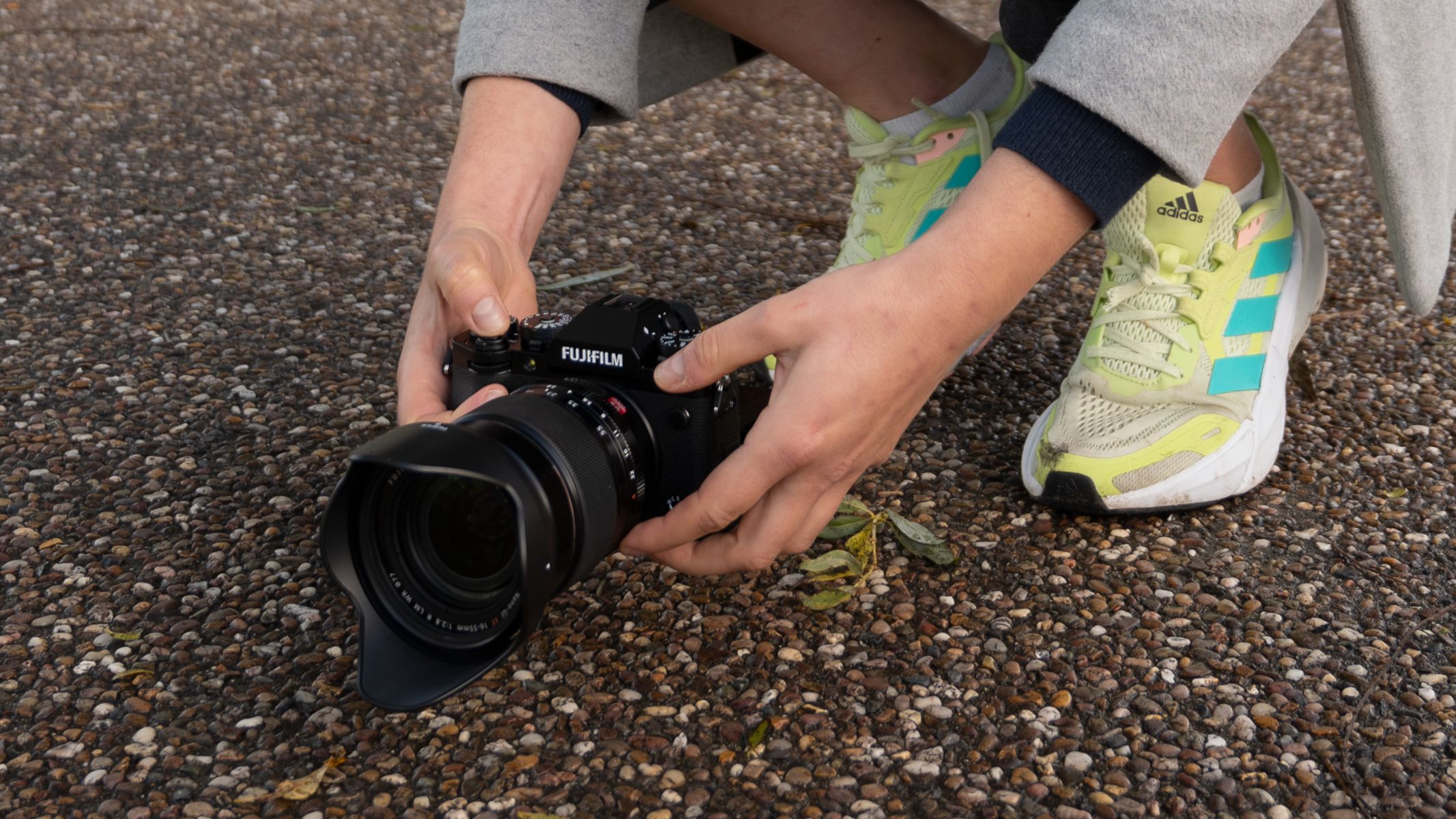
Many similarly-priced cameras have a light-up LED panel on the top of the camera instead, which will display the camera settings in the dark quite nicely. Although you could argue that the X-T5's physical dials are actually easier to operate in the dark (once you're familiar with them), generally, it's hard to see your settings in low light — I often found myself checking the main LCD screen instead.
Fujifilm X-T5: Functionality
- HEIF image format gives high quality in smaller files than JPGs
- Battery life is noticeably impressive
- Three-way tilting LCD touchscreen
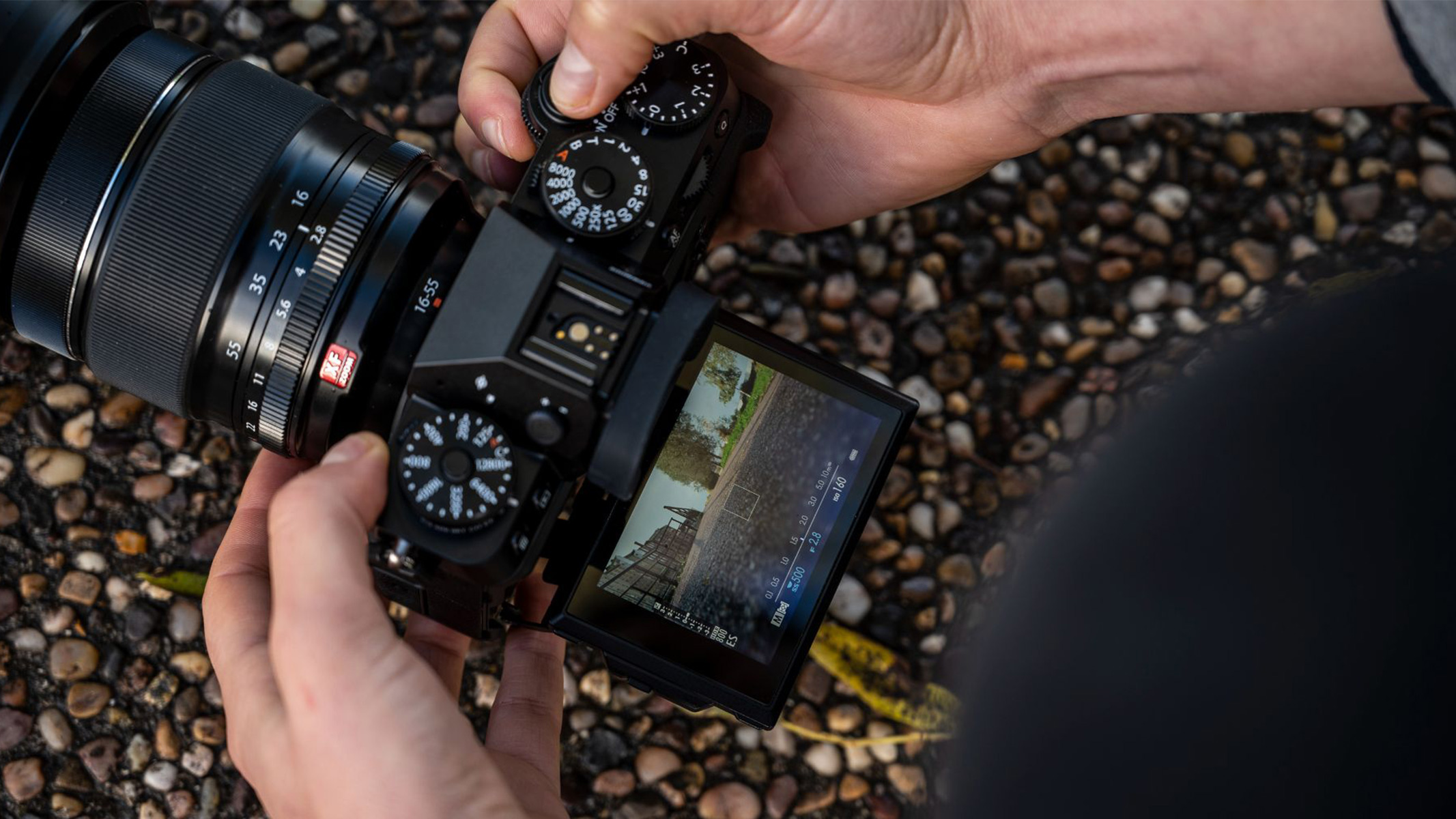
When you buy a new camera it's rarely because of the processor, but the X-T5's new X-Processor 5 is responsible for several new features. These include an image-processing algorithm that boosts resolution without compromising on the signal-to-noise ratio (better image quality at higher ISOs), twice the processing speed of the X-T4 and more efficient power consumption for longer battery life.
DSLRs are still the cameras to beat when it comes to battery, but the X-T5 will last for around 700 shots. It drains significantly more quickly for bracketed shots and when using Bulb mode, but a spare battery largely solves this problem.
Unlike the Fujifilm X-T4's flip-out LCD touchscreen, the X-T5 gets a 3-way tilting touchscreen with a bumped-up resolution of 1.84 million dots. This can be a bit awkward to use for composing nighttime shots when the camera is pointing upwards at the sky. You also can't flip it out to face you (so no vlogging or self-portraits) or fold it back on itself to keep it protected.
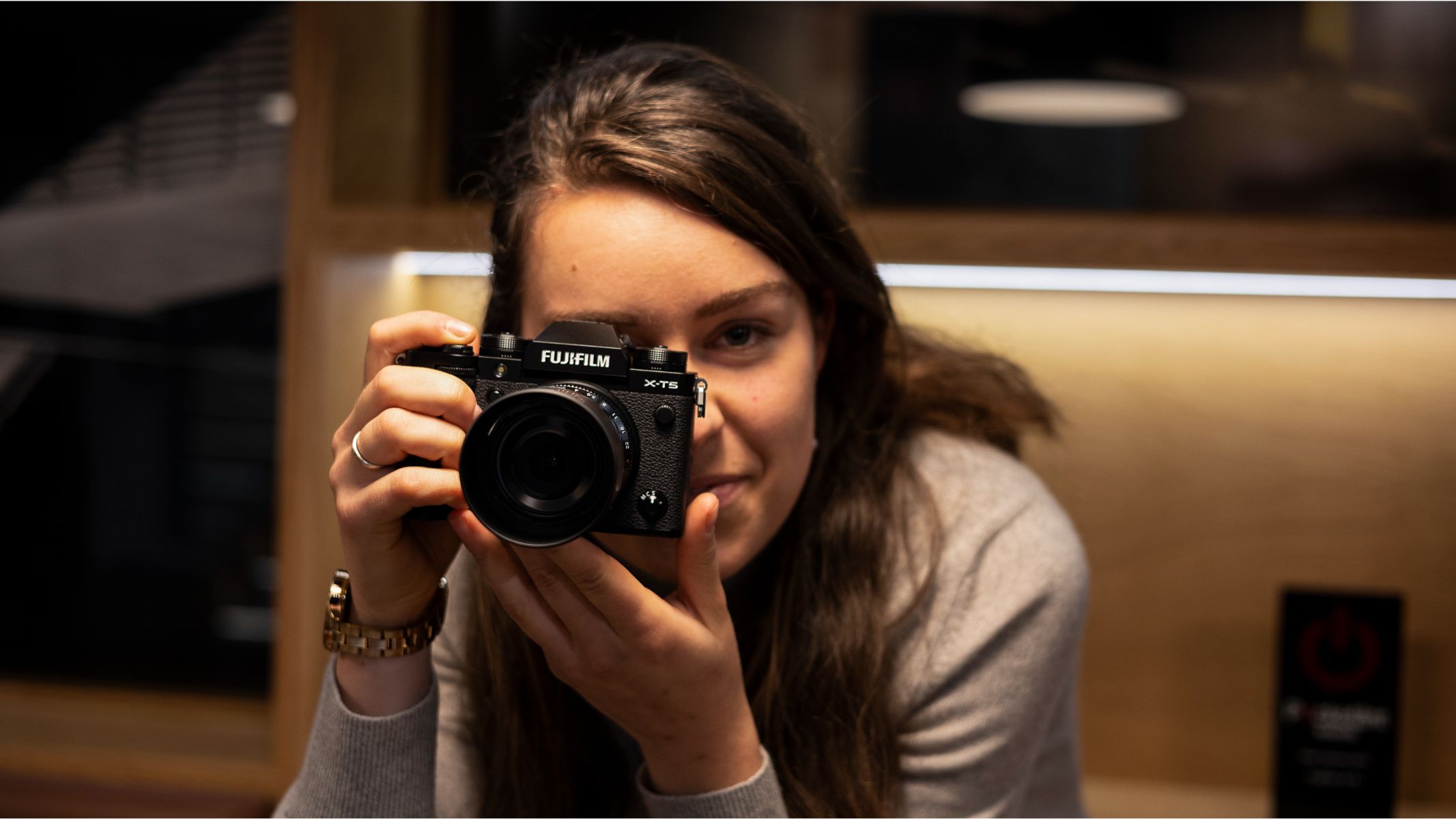
Otherwise, the LCD is sharp, color-rich and responsive, and you can choose how much information is shown on the display if you want to see the edges of the frame more clearly. You'll see the same screen through the electronic viewfinder, which is activated as you move closer to it via a sensor. This is also pleasingly crisp, but again, awkward to use when the whole camera is pointed upwards.
Navigating the camera menu is simple and quick via a four-way joystick. As we've mentioned already, the X-T5 doesn't have exposure modes like Manual, Aperture priority or Shutter priority. Instead, there's Automatic (A) and Bulb (B), and the rest of the controls are up to you. In truth, this suits nighttime photography well, where you're likely to adjust the settings manually to account for the ambient light in a scene.
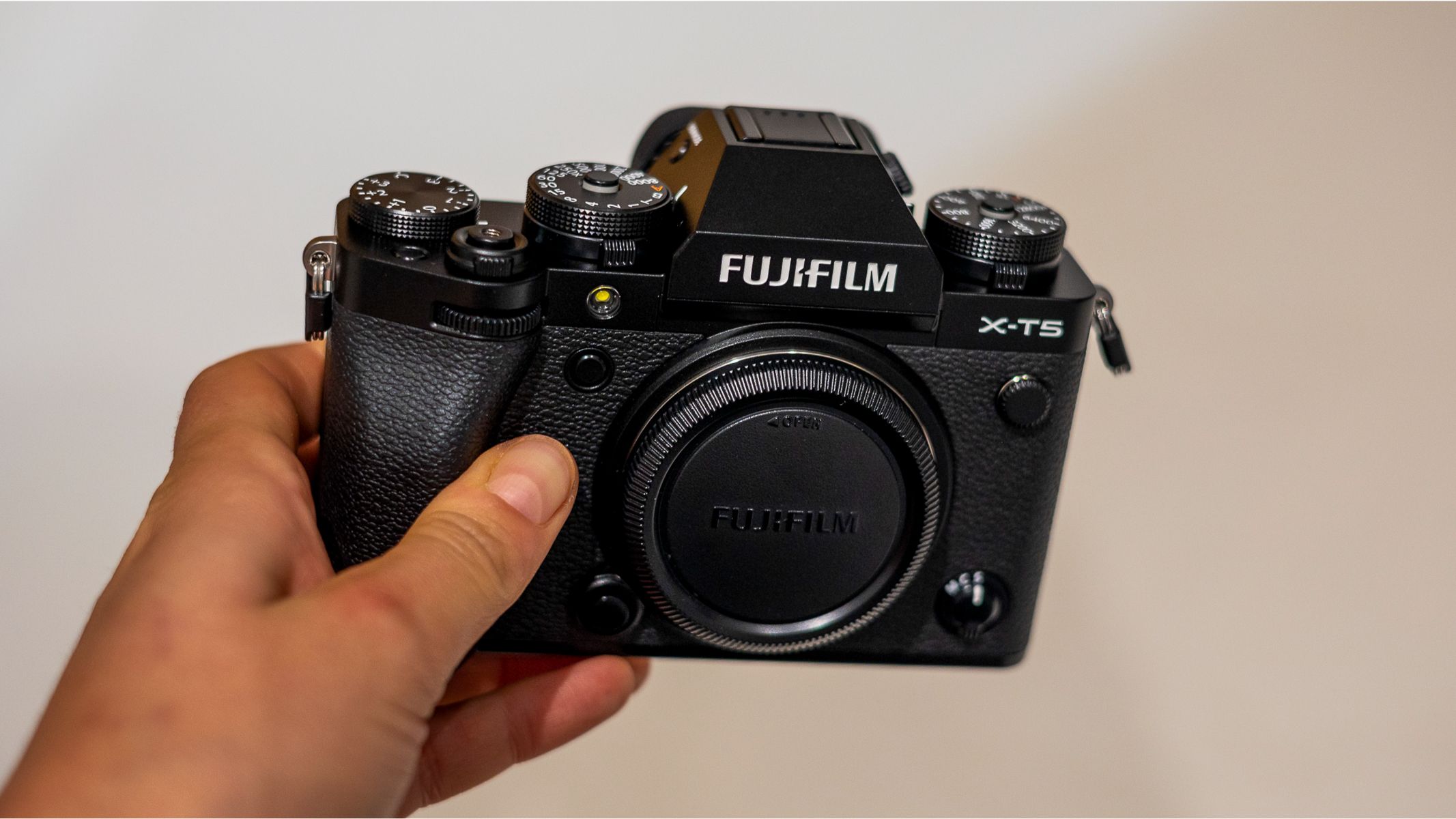
One underrated feature of the X-T series is that by moving the shutter to T, you can dial in shutter speeds longer than the 30 seconds offered by most consumer cameras — a great benefit for capturing very dark skies when minutes, rather than seconds, are necessary for the correct exposure.
The Fujifilm X-T5 has two SD card memory slots, allowing you to shoot both JPGs and RAW files simultaneously. As well as the standard JPEG and RAW (14bit) file formats, there's also DCF, TIFF (created with an in-camera RAW conversion) and for the first time, HEIF files. This High-Efficiency Image File Format produced 10-bit image quality at a 30% smaller file size than JPEG, which might come in useful if you forget to pack extra memory cards, or need to capture more starry sky shots than planned.
Fujifilm X-T5: Performance
- Image stabilization is good in low light
- Image noise at higher ISOs isn't class-leading
- Autofocus subject tracking is superb
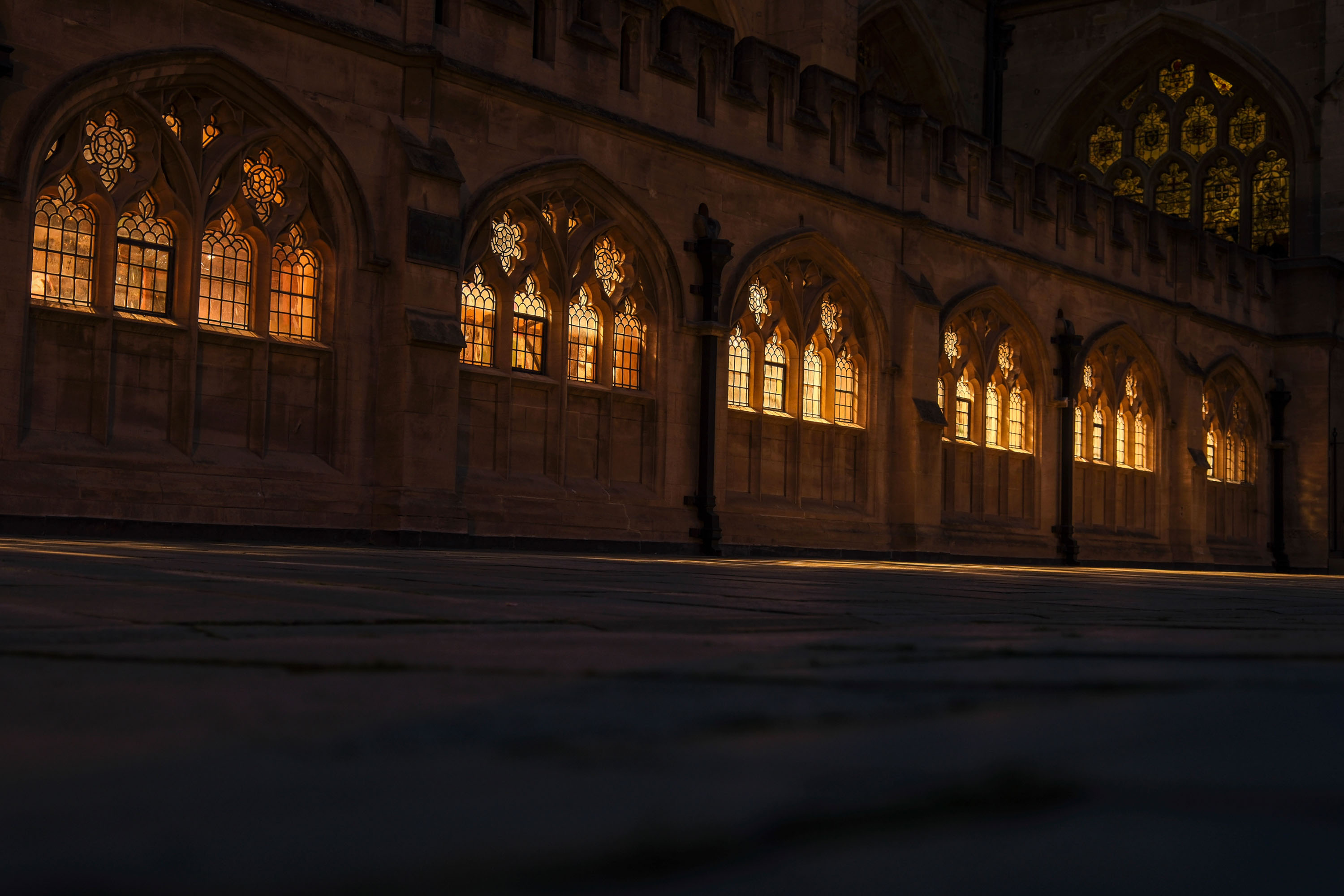
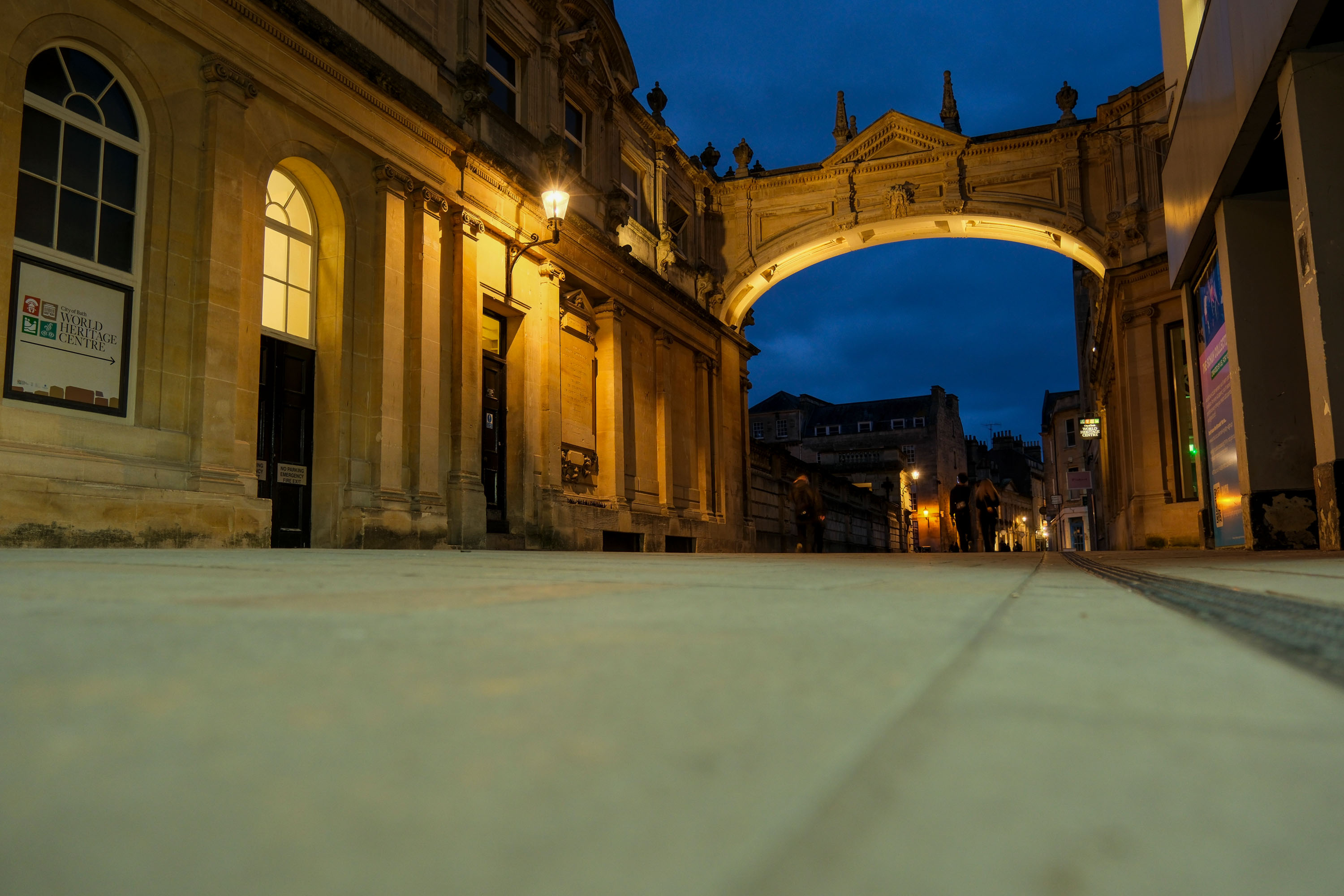
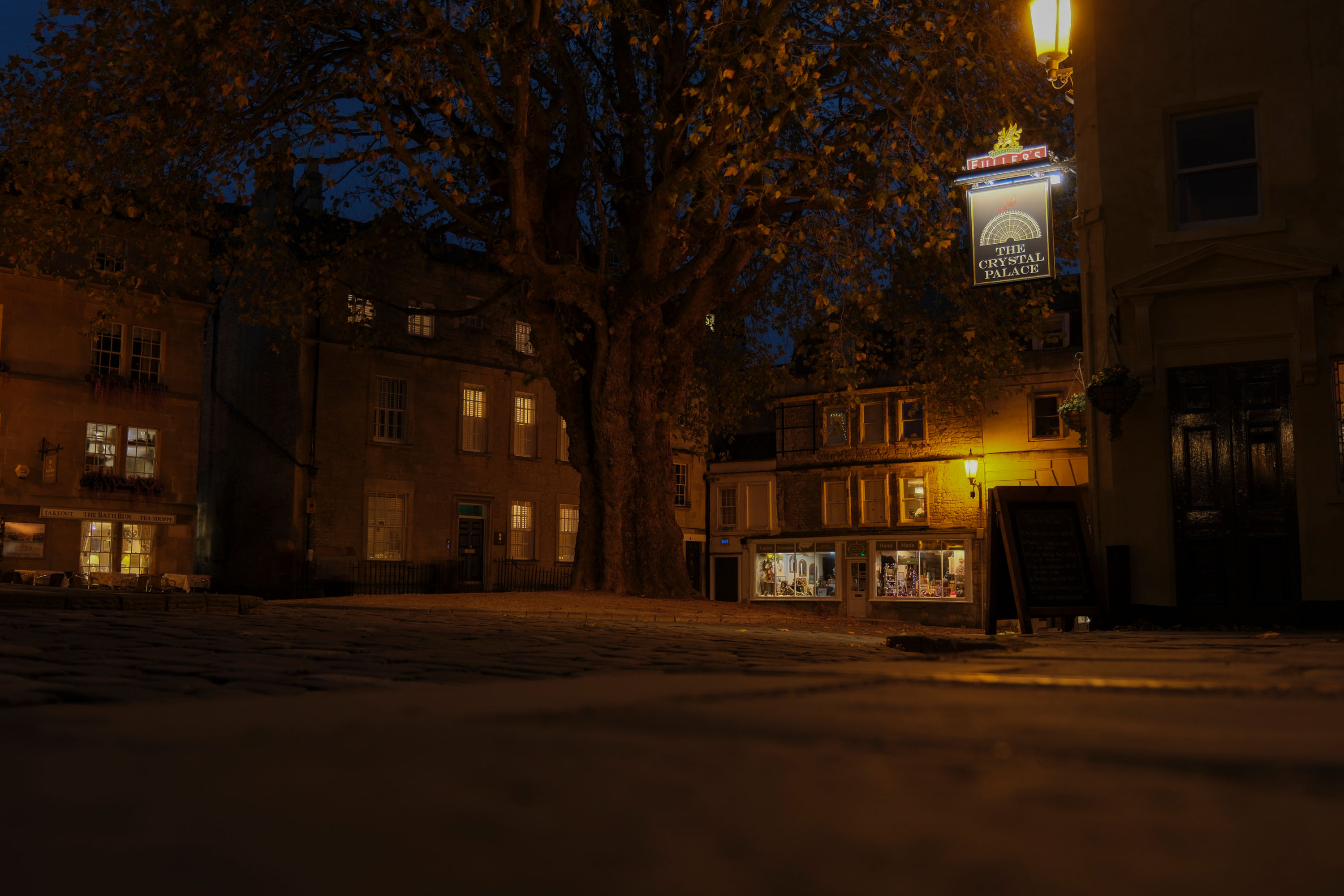
The X-T5 has the same seven-stop built-in stabilization as the flagship Fujifilm X-H2S and X-H2. It's an excellent crutch to rely on when shooting handheld images in low light as you can get away with slower shutter speeds, without camera shake. IBIS also powers the X-T5's Pixel Shift Multi-Shot feature, which can create an ultra-high-resolution 160MP image with one touch of the shutter button by shifting the sensor by a half pixel between each frame. It's not a mode that you'd use for fast-moving subjects, but it has the potential to quadruple the resolution and detail with static sky shots.
Moving onto autofocus — again, the same as the X-H2 — the subject detection modes now include animals, birds and vehicles — and they all lock onto targets rapidly. For night sky photography it's probably best to switch the focus to manual using the toggle on the front of the camera, but it's good to know that AF tracking is accurate and zippy for a wide range of genres.
Now let's talk about image quality. Of course, the main downside of shooting with an APS-C sensor (compared to full-frame) is the level of noise you get at higher ISOs. The X-T5 isn't immune to this issue, but it's definitely useable up to around ISO12,800. Noise actually becomes more noticeable if you've deliberately underexposed images, then try to lift the shadow areas by a few stops in post-processing. It's not a dealbreaker, but it isn't class-leading either.
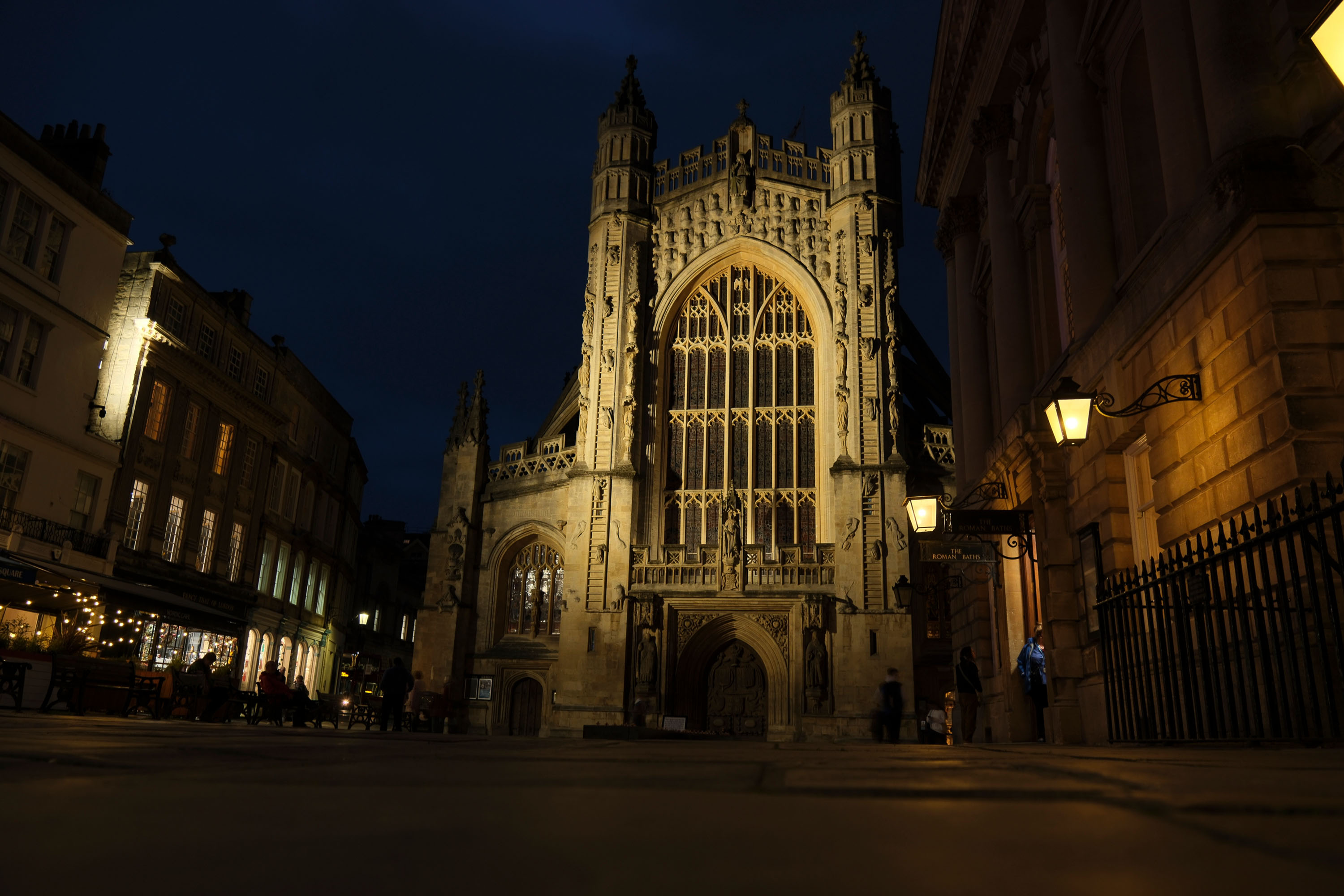
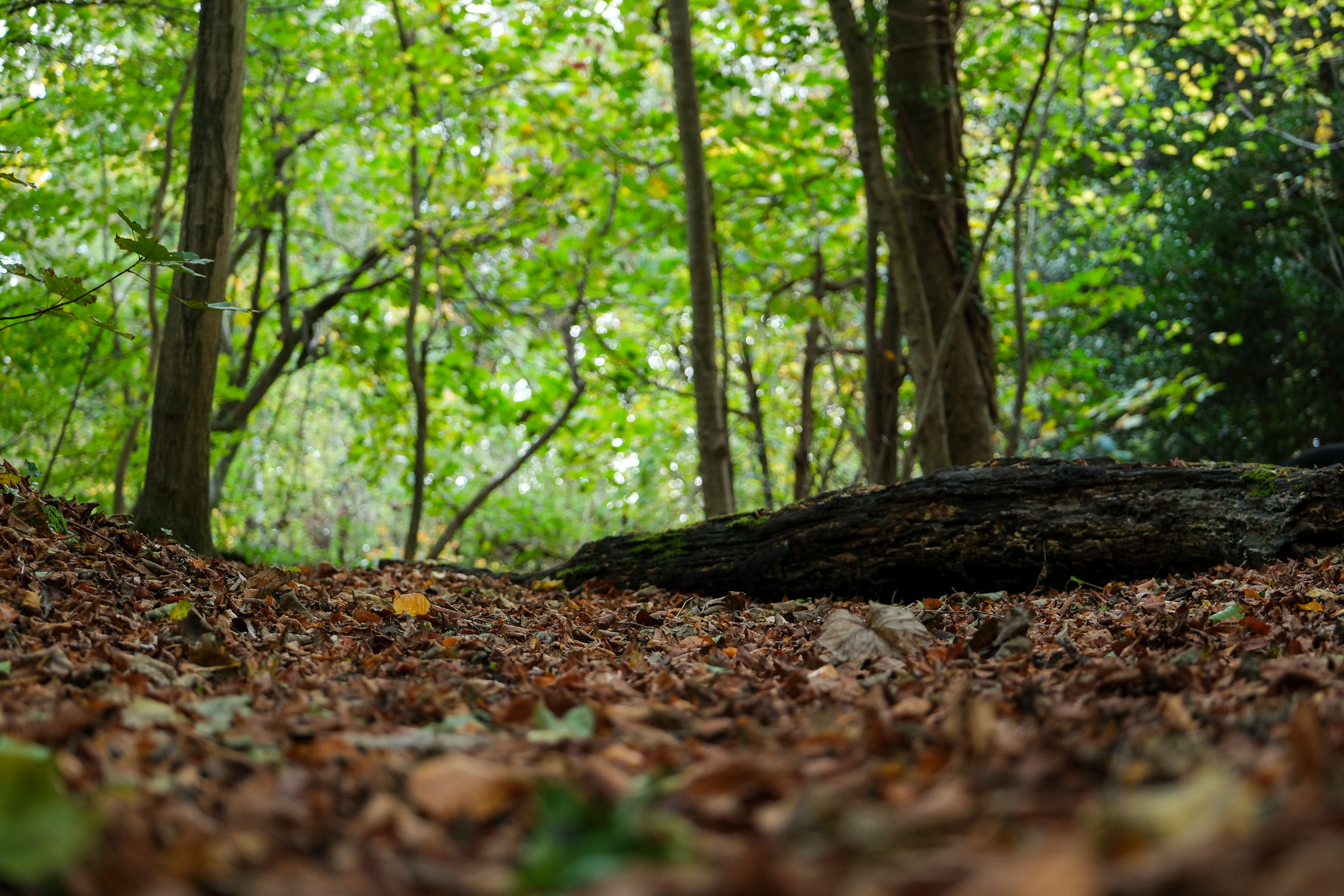
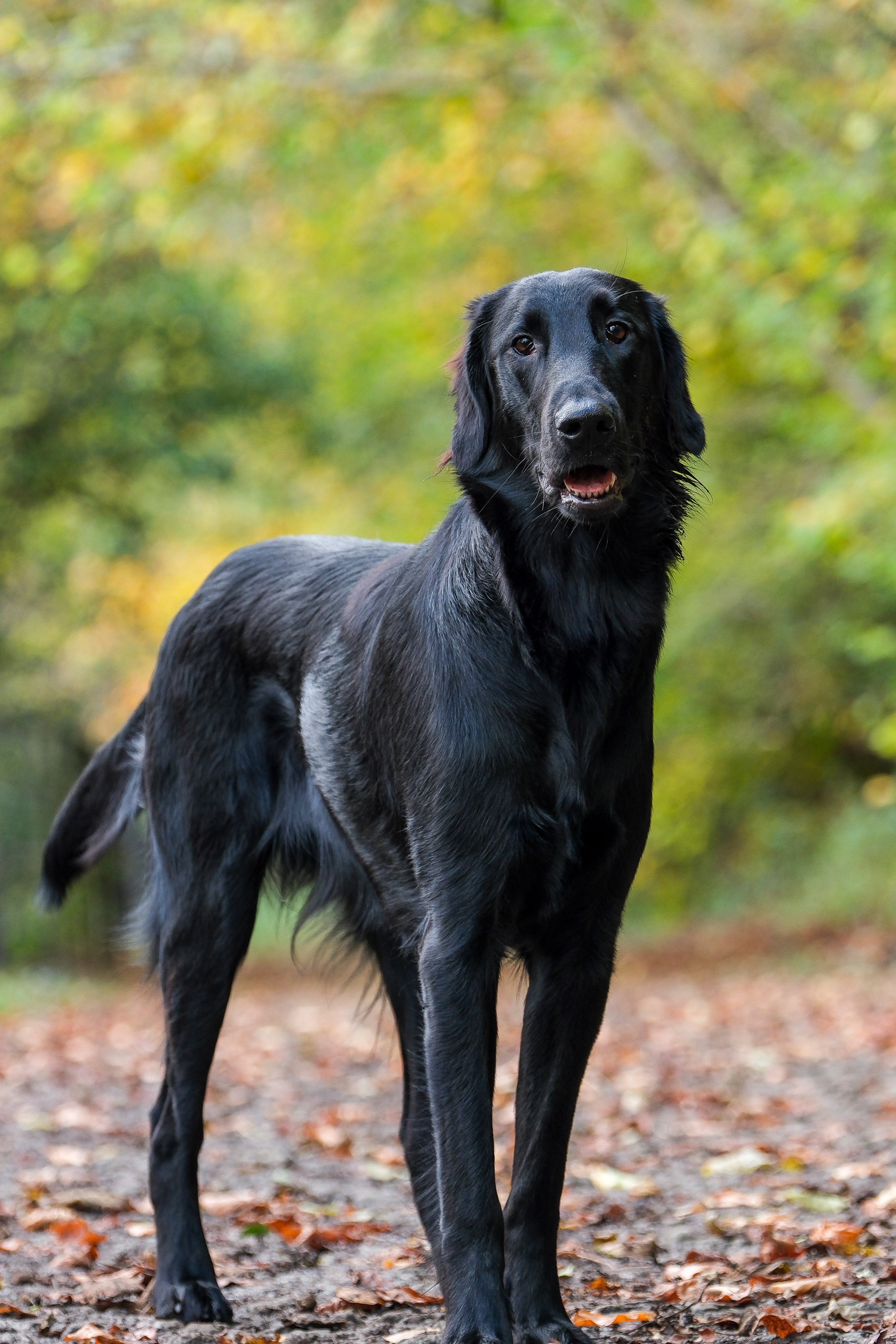
Cameras often render nighttime shots as too warm, but the X-T5's Automatic White balance is generally very accurate when shooting in RAW. We can thank deep-learning AI tech for that, which identifies orange-tinged colors to avoid color casts. It's worth mentioning that there are also 19 Film Simulation modes on the X-T5 — which can be applied to JPGs. These are too much of a gimmick for serious astrophotography but can be fun to try out if you're sending shots straight to a smartphone.
The X-T5 might not be an astrophotography specialist but it's equipped with a raft of tools to help you capture night-time subjects. The interval timer, for example, can be set to record an infinite number of images at an interval of your choice from a single second to a full 24 hours. This opens up the possibility of capturing time lapses, star trails and other celestial events without the need for a separate intervalometer.
The multiple exposure mode effectively combines up to nine images into a composite, and then there's exposure bracketing and focus bracketing, the latter of which lets you choose one to 999 frames with a choice of ten-step sizes. Focus stacking shots is a great way to increase the sharpness of night sky images, and the X-T5 speeds up the process.
Should I buy the Fujifilm X-T5?
If you want a camera that truly makes you feel like a 'traditional' photographer, the X-T5 is an amazing option that grows on you the more you use it. However, it's not a nighttime specialist by any means, and the cropped sensor is always going to produce more noise in low light and higher ISOs than a full-frame camera will do.
Buy it if you like the retro look and want a versatile all-around performer at a reasonable price. Don't buy it if you want a camera with a totally modern feel, or if all you shoot is astrophotography at high ISOs.
If the Fujifilm X-T5 isn't for you
If you've got a smaller budget than the X-T5 and want a full-frame camera for better low-light performance, consider the Canon EOS 6D Mark II. It's a cheaper and older DSLR, but it still produces great images, as well as 4K time-lapse videos.
If you feel an affinity for Fujifilm but want its top-performing camera, then spend $300 more on the Fujifilm X-H2 which has better video, burst modes and modern handling.
At a similar price, the Sony A7 III is an excellent choice if you're not dabbling in much beyond night photography, thanks to its exposure-ramped view to help compose astro shots as well as low light autofocus detection.
Join our Space Forums to keep talking space on the latest missions, night sky and more! And if you have a news tip, correction or comment, let us know at: community@space.com.

Lauren is a photographer, writer and editor based in the Cotswolds, UK. An experienced journalist who has been covering the industry for over ten years, she's equally adept at putting the latest camera through its paces or learning a creative shooting technique and then passing that knowledge on in an accessible way. Lauren holds a degree in Natural History Photography and has plenty of real-world experience in a variety of disciplines, from astrophotography to wildlife, weddings, and even commercial portraiture. Lauren is the Managing Editor of Digital Camera World, having previously served as Editor of the global publication Digital Photographer, a practical-focused magazine that inspires hobbyists and pros alike to take phenomenal shots and get more from their kit.
-
PQrstuv This article lists "Physical control dials aren’t easy to find in the dark" as a con. This is terribly misleading since any photographer that knows their camera should easily be able to find physical controls in the dark. It's the non-physical controls (touch screen) that are a pain in the dark. In fact, I seek out devices with physical buttons for use in the dark, or without having to look at the device to control it.Reply
I shoot Nikon, personally, but this seems like a false "con". -
SLRiley I've have the XT-4 and now the XT-5. Here are my observations when using these cameras for astrophotography:Reply
1. Crop sensor - First, a crop sensor gives you more "magnification" than a full frame sensor, and that can be actually useful in most circumstances. Second, the noise level in the backside illuminated X-trans sensor remains well controlled through the typical ISOs needed for astrophotography. Besides, most images are created by stacking many images, which helps reduce the effect of high ISO noise.
2. Screen position - Having used the "flippy" screen on the XT-4, I found the screen gets in the way more often than not, especially when I use an L-bracket. I find the multi-positional screen on the XT-5 way more versatile, even with the camera pointing straight up. If you want flippy, you can always get the XT-4 or the H2, and flip away.
3. X-trans sensor benefits - One benefit that most reviewers miss is that the X-trans sensor can pick up more of the near-IR area of the spectrum, allowing you to capture more detail of nebulae than typical Bayer sensors. Also, the X-trans sensors don't need a detail-robbing low-pass filter that Bayer sensors need to mitigate moisaicing. The only down-side to X-trans images is that Lightroom doesn't do a good job and de-moisaicing the RAW image. But you can get DXO's RawPrime 2 to demosaic the images properly. (Note - As of this time, DXO has not released a version of RawPrime that handles XT-5 RAW images.)
4. Dials - Sure, you can't read the dial settings in the dark, but you can read the screen, which shows you the settings as you adjust the dials. If you can't find the dials at all, then you have bigger problems than being able to read the settings. I'd rather have dial settings than PASM dials and complicated menus when it comes to adjusting a camera in the dark. Also, you can create a Q custom setting that gets you most of the way there for your typical astrophotography settings.
